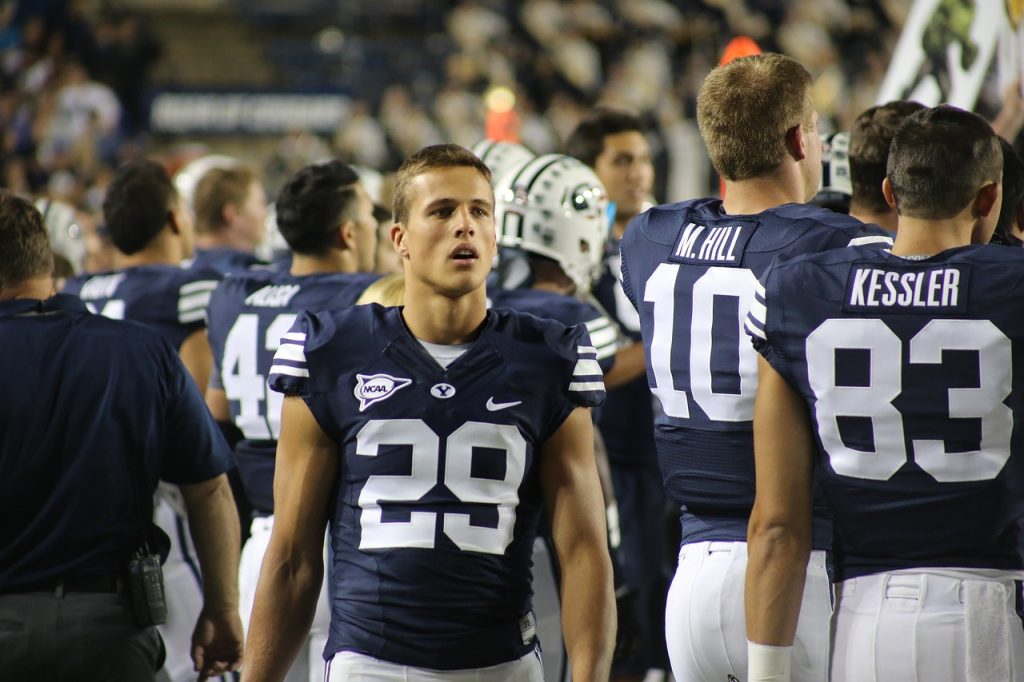In recent years, the landscape of college sports has undergone a significant transformation. One of the most groundbreaking changes has been the introduction of Name, Image, and Likeness (NIL) rights for college athletes. This shift has opened the doors for student-athletes to monetize their personal brands, allowing them to benefit financially from their hard work and dedication on and off the field. This article delves into the world of NIL deals and sponsorships, exploring how they are helping college athletes get paid.
Understanding NIL Rights
Before diving into the impact of NIL deals, it’s essential to understand what they entail. Historically, college athletes were prohibited from profiting from their name, image, or likeness due to NCAA regulations. This meant that while universities and the NCAA could earn millions from TV contracts, merchandise sales, and other revenue streams, the athletes themselves couldn’t earn a dime.
However, with growing pressure from athletes, lawmakers, and the public, the NCAA finally decided to allow student-athletes to benefit from NIL rights starting in 2021. This means that athletes can now sign endorsement deals, make paid appearances, and monetize their social media platforms, among other opportunities.
The Financial Impact on Athletes
The introduction of NIL rights has had a profound financial impact on college athletes. Top-tier athletes, especially those in high-profile sports like football and basketball, have secured deals worth thousands to millions of dollars. But it’s not just the stars who are benefiting. Athletes across various sports and divisions are landing deals, albeit of varying sizes.
For instance, a star quarterback might sign a significant endorsement deal with a national brand, while a track and field athlete might partner with a local business for a smaller sponsorship. The key takeaway is that NIL rights have democratized the earning potential for all college athletes, not just the elite few.
The Role of Social Media
Social media has played a pivotal role in amplifying the benefits of NIL rights for college athletes. Platforms like Instagram, TikTok, and Twitter have become powerful tools for athletes to build their personal brands and engage with fans. With a strong online presence, even athletes from lesser-known sports or smaller schools can attract lucrative sponsorship deals.
For example, twin basketball players from Fresno State, who aren’t necessarily household names in the broader sports world, have amassed a significant following on TikTok. This online popularity translated into one of the first major NIL deals, showcasing the potential of social media in this new era.
The Broader Economic Impact
Beyond individual athletes, NIL deals have broader economic implications. Local businesses can now tap into the popularity and reach of college athletes, driving sales and brand awareness. This symbiotic relationship not only benefits the athletes and businesses but also the local communities, as increased commerce can lead to job creation and economic growth.
Moreover, universities can leverage NIL opportunities to attract top talent. While schools cannot directly pay athletes, the potential for athletes to earn significant income through NIL deals can be a compelling selling point during the recruitment process.
Challenges and Considerations
While NIL rights have brought about numerous opportunities, they also come with challenges. There’s a learning curve for athletes in terms of understanding contracts, taxes, and other business-related aspects. Universities and external organizations are stepping in to provide education and resources to help athletes navigate this new terrain.
Additionally, there’s a need for clear guidelines and regulations to ensure fair play and prevent potential abuses. As the NIL landscape continues to evolve, ongoing dialogue and adjustments will be crucial to ensure the best outcomes for all stakeholders.
The introduction of NIL rights for college athletes marks a monumental shift in the world of college sports. These rights recognize the value and contribution of student-athletes, allowing them to reap the financial rewards of their dedication and talent. As NIL deals and sponsorships continue to grow, they promise to reshape the future of college athletics, bringing about new opportunities, challenges, and considerations for athletes, universities, businesses, and fans alike.
- The Ethical Implications
Beyond the financial and economic aspects, the introduction of NIL rights also brings to the forefront various ethical considerations. For years, the debate raged about whether it was fair for institutions to profit immensely from college sports while the athletes themselves received no direct financial compensation. With NIL rights, this ethical imbalance is being addressed, but new questions arise.
For instance, how can institutions ensure that the pursuit of sponsorships doesn’t overshadow the primary reason these students are in college: to receive an education? Balancing academics with the allure of potentially lucrative deals will be a challenge for many student-athletes.
The Changing Dynamics of Team Sports
Another intriguing aspect to consider is the team dynamic. In sports, especially team sports, unity and camaraderie are crucial. With the potential for certain players to earn significantly more than their teammates, there’s a risk of envy, tension, or even discord within teams. Coaches and team leaders will need to navigate this new dynamic, ensuring that individual successes don’t undermine team cohesion.
The Future of Recruiting
Recruitment in college sports has always been competitive. With the introduction of NIL rights, the stakes have been raised even higher. Schools in larger markets or with strong corporate ties might have an advantage in promising potential NIL opportunities. This could lead to an uneven playing field, with powerhouse schools becoming even more dominant. The NCAA and other governing bodies will need to monitor this closely to ensure competitive balance.
The Role of Agents and Advisors
With the potential for significant earnings, many athletes are now seeking representation. Agents and advisors, previously exclusive to professional athletes, are now becoming essential for college athletes. These professionals can provide valuable guidance in contract negotiations, brand building, and financial management. However, with this comes the risk of exploitation. It’s crucial for regulations to be in place to protect young athletes from unscrupulous individuals.
A Step Towards Professionalism?
The introduction of NIL rights blurs the lines between amateur and professional sports. While college athletes are not directly paid by their institutions, the ability to earn significant income brings them closer to their professional counterparts. This shift could lead to a reevaluation of what it means to be a “student-athlete” and might prompt further changes in the structure and governance of college sports.
The world of college sports is in the midst of a transformative era. The introduction of NIL rights for student-athletes is a game-changer, offering unprecedented opportunities for financial gain. However, with these opportunities come challenges that athletes, institutions, and governing bodies must navigate. As the landscape continues to evolve, one thing is clear: the world of college sports will never be the same again.







